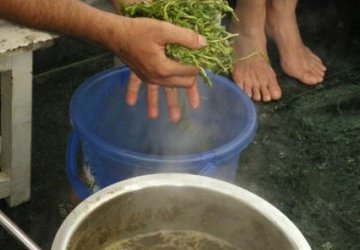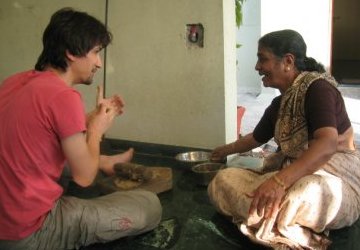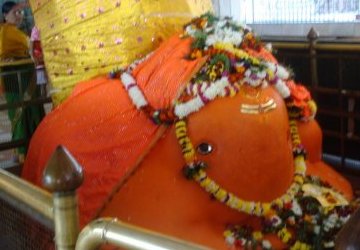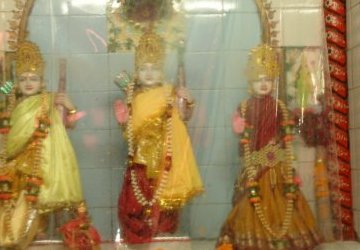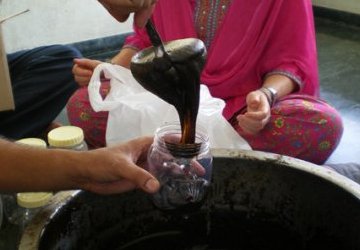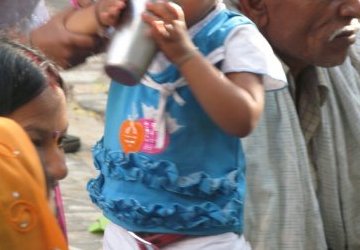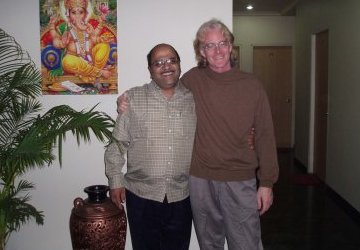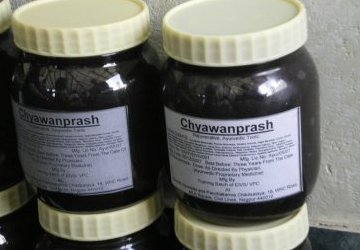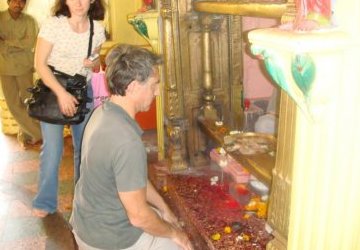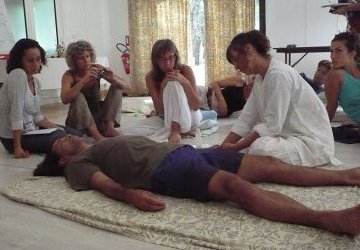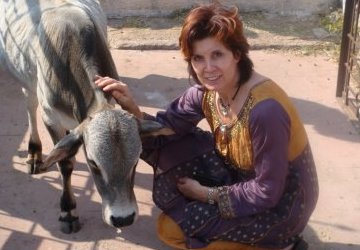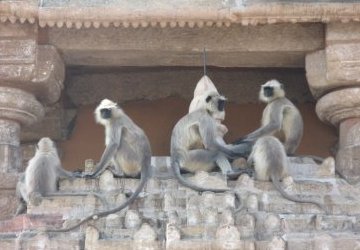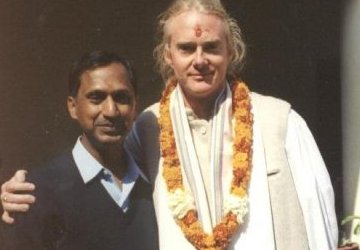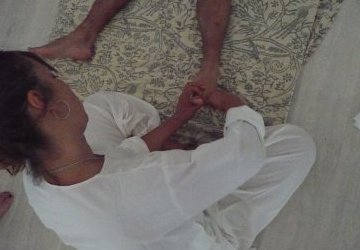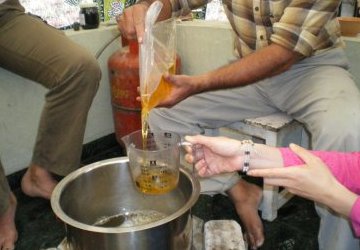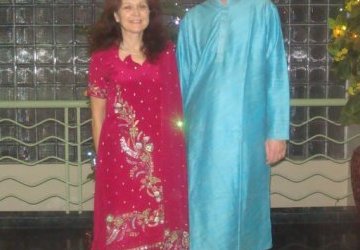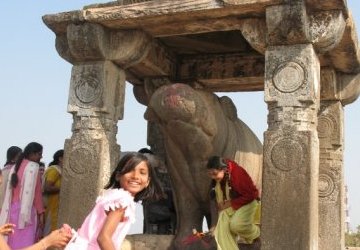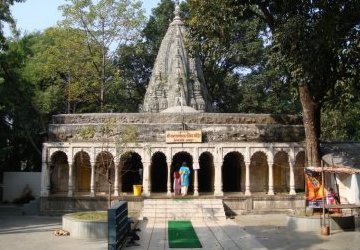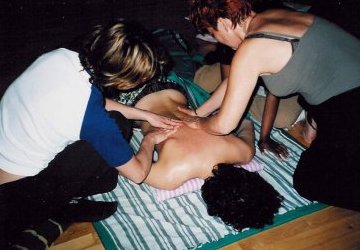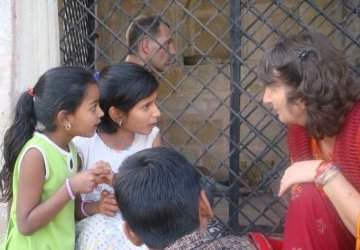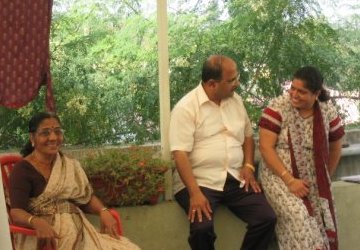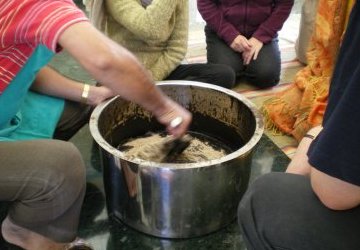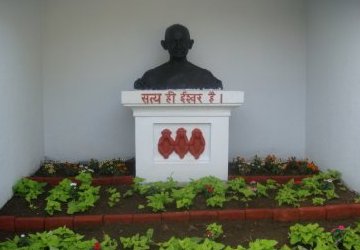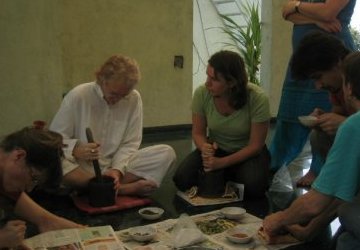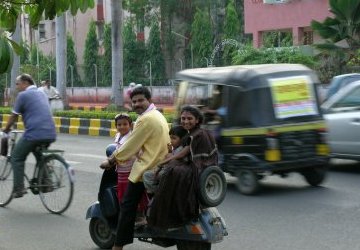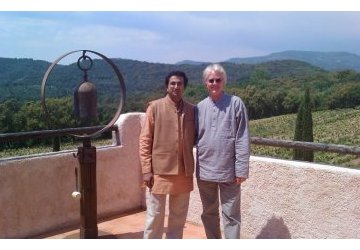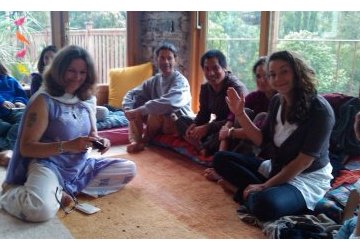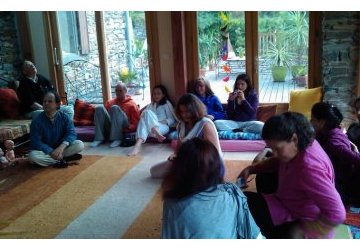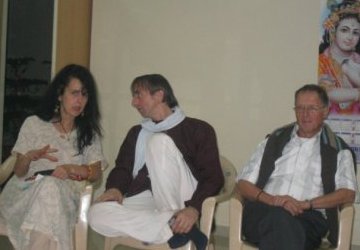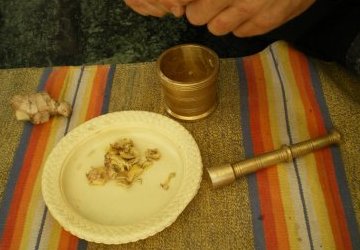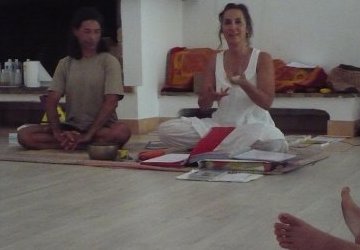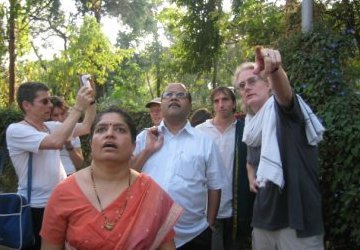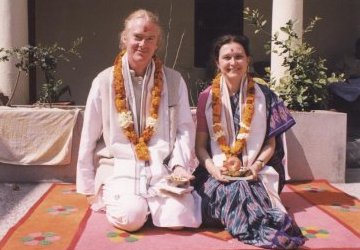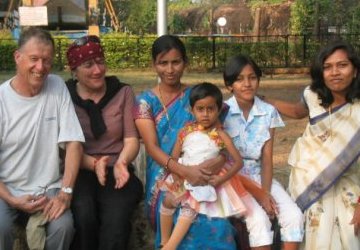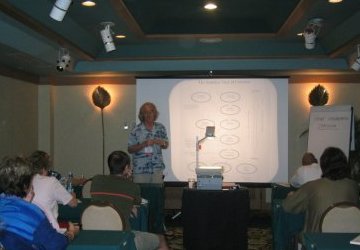Ayurvedic Healing for Women
’Ayurvedic Healing for Women’ addresses the need to treat the root cause of feminine disturbances rather than accepting the myth that symptoms of discomfort, pain and emotional swings are normal throughout life. Ayurveda is the best healing model to treat the root cause of symptoms by treating constitutionally, i.e., treating the whole person as an individual. Ayurveda has been successfully using these therapeutic methods for the last 5000 years.
This is a useful book for both individuals and health care professionals. Even though it was published in 1999 it was visionary at the time and is still relevant today. This book offers a number of herbal remedies as well as practical advice for women of all ages. A revised an updated textbook for Ayurvedic practitioners on women’s health, pregnancy and childbirth can be found in Vol. 5 of Atreya’s textbook series.
Paperback: 264 pages
Publisher: Red Wheel / Weiser (June 1, 1999)
ISBN-10: 1578631165
ISBN-13: 978-1578631162
Product Dimensions: 5.4 x 0.6 x 8.2 inches
Chapter One
You as an Individual Woman
“Then realizing the pure consciousness inhering as Self to be that self-same Tripura, he became aware of the One Self holding all, and was liberated” Tripura Rahasya
The fundamental point of Ayurveda is that everything is interrelated. Nothing is separate in the universe or the human body. Another fundamental point is that the external universe is reflected in the internal universe of the human body. While everything is interrelated each item is also unique. Each part contributes its own special quality to the whole, whether as a cell in the liver or as a human being on earth or as a star in the sky.
Hence, the concept of individuality is basic to the Ayurvedic system. Ayurveda only works with individuals. Yet, this understanding of the individual is within the context of the whole or Mother Nature. In Ayurveda the word Prakriti means Mother Nature - that feminine quality which allows form to manifest. It literally means ‘nature’ and encompasses the unique qualities of everything.
In order to use the Ayurvedic system you need to have a basic understanding of how Ayurveda determines your individuality. In this sense it does not mean to categorize you as a person. Rather, Ayurveda strives to understand how your organism functions; how your metabolism functions; how your mind functions.
This understanding of how our body and mind function is liberating. It frees us from societies stereotypes, from conditioning’s, from misconceptions and judgments we may have formed about ourselves. Ayurveda understands that each person is born with a basic nature that does not change. Understanding your natal or genetic make-up frees you from all the other concepts. This knowledge is empowering. Your natal nature, or constitution is also called Prakriti in Sanskrit. However, this is not the cosmic Mother Nature Prakriti, but the individualized nature. Prakriti as used in the rest of the book will refer to the natal constitution of a person.
Ayurveda also understands that there is a changing nature or situation in the body. It is called Vikriti in Sanskrit which means “that which covers Prakriti”. This signifies a transient state of the body and mind. For example; if I have a cold, that is going to show as an imbalanced state. It will not indicate change in my natal constitution which remains fixed as diseases pass over it. The prakruti does not change during the life. In very rare cases, chronic illnesses can change the prakruti and become the actual nature of the person. This is quite rare though and is terminal.
Once these two different states of the body are clearly understood it is possible to proceed. One constitution does not change and one is always in change. When the changing constitution (vikriti) is the same as the natal constitution (prakriti) then health is present. When they are different then an imbalance is present. The imbalance can pass away with time or it can become a ‘disease’.
Ayurvedic theory is based upon the assumption that if you understand your natal constitution then you will take measures to prevent imbalance from happening in the first place. However, if imbalance is there then understanding your constitution will determine the kinds of therapeutic treatments that you can choose or receive.
Ayurveda also recognizes two different types of natal constitutions - physical and mental. The ancient texts say that these are usually the same. What many modern practitioners are finding today - especially in the West - is that this rule is not as fixed as it was in the past. We are now finding certain individuals that have different mental constitutions than physical. They are still a minority. It can create confusion though for a woman who is trying to self diagnosis herself.
One of the main confusions that rests with untrained people is the confusion between the natal and changing constitutions. Often clients of mine will think that they are the disturbed state - which is usually a chronic situation - instead of the natal state which they have forgotten over time. I will try to clarify the differences below so that you can identify yourself more easily.
Ayurveda determines your individuality by seeing which of the three natural forces dominate your organism. These three principles or forces where discovered by observing nature for hundreds of years. These three forces are not man made, or theories, or concepts. They are controlling the environment and the manifestation - whether we understand them or not. They are primal forces of Mother Nature and are basically feminine in nature and are not directly observable. Although one can observe their functions and effects in the body and in nature.
These three forces are called: movement, transformation and cohesion. Their names in Sanskrit are Vata (that which moves); Pitta (that which transforms); and Kapha (that which binds). These three principles combine to make ten different types of persons. Seven types are traditionally recognized, yet, for our purposes ten will provide greater clarity. It is said that to understand these three ‘doshas ’ or forces one needs to study them for eight years as they are metaphoric for Mother Nature’s movements in the manifest world.
The main qualities of the three doshas are given below:
| Vata: | cold, dry, light, irregular, fast | like wind |
| Pitta: | hot, oily, light, penetrating, moving | like fire |
| Kapha: | cold, oily, heavy, regular, slow | like water |
The humors combine in the following ways to make ten types:
| vata | vata/pitta | pitta/kapha | vata/pitta/kapha |
| pitta | vata/kapha | kapha/vata | |
| kapha | pitta/vata | kapha/pitta |
There is more information on this subject in my previous book, Practical Ayurveda. It is a very vast subject and as much reading as you can do on it will be valuable. Here are the basic physical descriptions of the ten different combinations:
1. Vata: Vata women are thin and either tall or short. They do not gain weight and have little or no fat tissue. Their arms and legs are quite thin. Their hair will be dry as will their skin. Their complexion may be darkish and they can tan well, though they may lose it rather fast. They will tend to have brown or dark eyes. Their circulation tends to be weak or variable. Their immune system is weak or variable. Menstruation is often irregular, with little flow and with sharp pain or cramps.
2. Pitta: Pitta women are middle in size and height. They usually do not gain much weight until the age of 36 to 39, yet even still it will only be a few pounds. They have a fair amount of fat tissue, enough to give form, but not overly so. Their hair will be slightly oily and may turn gray at a young age. Their skin will be slightly oily and prone to infections or pimples even later as an adult. Their complexion may be fair or reddish, in either case they will sunburn easily. Their hair will also tend to be fair or clear and prone to dandruff. Their eyes are generally light in color, blue or green or gray. Their circulation is good. Their immune system is normally good. Menstruation is often profuse with dark red blood, sometimes pain can be there. They can have the tendency for vaginal or urinary infections.
3. Kapha: Kapha women are larger than the other two types. They may not be taller or shorter, but they will have thicker bones and bodies. They are the strongest physically. They can be fat or normal in size. However, they will always tend to put on weight and so must be aware their whole lives of eating habits. They will tend to have thicker arms and legs than the other types. They will have the best quality of skin and hair, both slightly oily, but with good luster. Their complexion will be fair or whitish, yet they tan well and evenly and they hold their tan well also. Their eyes can be of any color though tend to be brownish. Often they have poor circulation. They have the strongest immune system. Menstruation is very regular with medium flow, usually little or no pain, but if present it is dull and achy. They are prone to accumulation which can result in fibroids and tumors.
4. Vata / Pitta: These women will usually be less thin than the pure vata types, but can have a vata type body. The skin gives a clear indication if pitta is present - it is oily or do pimples or infections come often? Look at the hair, is it thin and dry (vata) or oily and dandruff (pitta), or a mix of both. These indications will help you see if there is a combination of both Vata and Pitta. Vata will have irregular circulation, pitta good, these types will tend to fluctuate between both. Menstruation will be irregular sometimes with pain and irregular flows - sometimes heavy, sometimes light.
5. Vata / Kapha: These women will have either a vata or a thinner kapha type body. they will tend to shorter than taller. Usually if vata is first they will tend to have more of vata type body. The skin is a good indication, is it oily or dry? If thinner with oily skin and no inflammations then it is a good indication of Vata/Kapha. V/K types will tend to have poor circulation with cold hands and feet. Menstruation is more regular and with less pain, flow is little or light.
6. Pitta / Vata: These women will be fairer in complexion, perhaps still thin, yet with oilier skin and hair than V/P types. They will be more prone to reddish skin and pimples. They will burn easier in the sun. Menstruation will tend to be heavier with fewer irregularities, yet more prone to infections and irritations in the vagina.
7. Pitta / Kapha: These women are strong in body with good muscles. They will tend to be larger, but not necessarily fatter than other pitta types. This is a very good constitution for athletes and sports (though exercise is good for all types). They may have a problem with oily hair or skin, though of an inflammatory nature. Their circulation will be good. Menstruations will be heavier rather than lighter, yet regular and with little or no pain. Sometimes infections can occur - such as yeast infections with mucus discharges.
8. Kapha / Vata: These women will be larger than other duel types that include vata. They will have good skin and hair. They may have pale skin. Vata will tend to manifest as irregularities in the body / mind. Perhaps they will have dry skin occasionally. Menstruation will be regular with light flow, pain can occur at times as can blockages or accumulations such as fibroids and cysts.
9. Kapha / Pitta: These women will be larger than other duel types with pitta. They will be strong if fit and have great endurance. This mix will give them better circulation than pure kapha type. Menstruation will be regular with a heavier flow than a pure kapha type. Pain will generally be absent, but the tendency towards infections and accumulations will be there - such as yeast infections.
10. Vata / Pitta / Kapha: Traditionally this type is said to be rare and exhibits perfect balance of the three humors. But according to ancient texts this may not be our modern definition of perfect beauty as it tends to reflect a large, strong, lustrous kind of body - with a fair amount of padding. This type is rare and I have only encountered one or two in many years of practice in Europe. They are said to be the strongest and have the most endurance of all types. Menstruation is balanced with a light flow that causes no problems physically.
Here are the positive qualities of the different constitutions, both emotional and physical:
1. Vata: Vata is creativity, it is intuition. Vata is abstract and fluid. It is changeable and adaptable. Vata is present in all artists of every medium, it is inspiration. It provides flexibility and is social, though not necessarily in a profound way. Travel and movement are enriching. Several activities are needed and pursued with joy. When in balance vata women have light and easy cycles, generally shorter in duration - 24 to 27 days and lasting for 2 - 4 days. Pain is absent and so are emotional swings. Some fatigue may be present on the first day of menstruation. Life is abundant and joyous.
2. Pitta: Pitta is the energy of manifesting things. It is driven and motivated. The quest is very important, as is knowledge. Understanding the nature of things and the inquiring mind are pitta in nature. Pitta is discrimination of the mind. Pitta women can impart their understanding to others and assist or aid people through their knowledge. They like to create things and put ideas into form. They are passionate and motivated. They are full of life and enjoy the interaction of life, yet need to remain independent. They need and seek responsibility. Their mind likes and needs to be stimulated through learning and seeking. Pitta is the energy to initiate things. When balanced pitta women have regular cycles with a heavier flow than the other types. Yet pain and emotional swings are not present. Life is exciting and passionate. Their menstruation time is average, 3 - 5 days long.
3. Kapha: Kapha is the energy of cohesion. It binds and provides the quality of lubricating or of balance and stability. Kapha is the basis of the body and of the mind for all types as it provides the needed stability. Hence, Kapha is the quality of stability in the mind. Kapha women are the archetype of the Divine Mother and they radiate unconditional love. When balanced kapha is devotion to the divine or to life itself. Love is the balancing quality in nature and kapha is that love in an impersonal sense. Kapha people move little (as in locations) and prefer to stay in a known environment. This allows their best qualities to overflow. They are the most reliable and lest self-oriented of the three in a balanced state. They enjoy and need to be with others and prefer a few deep relationships to many superficial ones. Family is very important and they love to create a family when secure. They are less concerned with intellectual pursuits than the others and prefer emotional relations with live beings - plant, animal or human. When balanced they have very regular and light menstruations with no pain or emotional swings. Life is full of love and abundance. Their menstruation is longest, 3 - 7 days.
4. Vata / Pitta: This combination generally makes a woman creative and able to manifest the creativity in a concrete form. That can be in the arts, in business or any walk of life. This is a good combination to teach. They are usually very fun, energetic and like change. Their cycle will tend to be regular with normal flow.
5. Vata / Kapha: This combination generally makes a woman creative in a more stable or concrete way. This may be more likely to manifest towards people or animals than abstract material forms. Great power of intuition lies here. An attraction to nature and all living things is present. The cycle for a V/K woman is regular with light flow.
6. Pitta / Vata: This combination generally makes a woman more passionate towards life and the interests that she has. There will be the tendency to be a motivating force - in an energetic way - with those around you. This is also a good combination to teach or help others in any kind of pursuit - emotional, intellectual or physical. Their cycle will be regular with a good flow.
7. Pitta / Kapha: This combination generally makes a woman motivated with life. She will get into life and live it. She wants a home and family yet she will pursue different interests or careers. She has great capacity for work. Her cycle will be regular with an even flow.
8. Kapha / Vata: This combination generally makes a woman alive and bubbly. Talkative, friendly and social this combination has the stamina to relate directly, deeply and clearly with many people. She will be caring and intuitive in her approach to others and will perhaps enjoy organizing others or events. Management skills with people are there. Her cycles will be regular and light.
9. Kapha / Pitta: This combination generally makes a woman powerful and strong. She has the ability to do whatever she wishes in life. Yet it will tend to be more humanitarian than material in a balanced state. She will be a strong benefic force in society. Her cycles will be regular and of moderate flow.
10. Vata / Pitta / Kapha: This combination can make a woman the archetype of a goddess. She will generally radiate love to others yet she will be strong and possess great strength of will and brilliant intuitive abilities. She will be regular and have a moderate menstrual flow.
Here are the destructive or problematic qualities of the different constitutions, both emotional and physical:
1. Vata: When imbalanced vata brings depressions, stress, fear, anxiety and worry. Irregularities happen throughout the body and the mind. All nervous disorders are due to vata. Menstruations become irregular with sharp pains and cramps before and during the first days of menstruation. The pain can be debilitating. Depression is common before menstruation. Their menstruation can stop under extreme stress or depression. Vaginal dryness is caused by an imbalance of vata. Fatigue will generally be present before and after the beginning of menses.
2. Pitta: When imbalanced pitta brings frustration, irritation, anger, manipulations and jealousy. The heat of pitta brings all forms of infections and inflammations to the body and the mind. If left untreated it burns the spirit. Menstruation becomes very heavy with a lot of blood loss which leads to anemia, fatigue and energy loss. Pain can be present before menstruation, yet not sharp like vata. A woman will get frustrated and angry with those around her before her menstruation begins. Once it starts she will feel a great relief, but may also feel quite tired.
3. Kapha: When imbalanced kapha will create huge emotional needs, the feeling of a lack of love and insecurity. They will internalize their emotions and self-destruct through accumulation of emotions which may take the form of fat, tumors, fibroids, cysts, etc. Generally they try to avoid expression of their feelings which leads to destructive physical habits. Their cycle can become disrupted from strong emotions though will generally still be regular. They will tend to suffer more emotionally with large swings of guilt, unworthiness and failure accompanied with a basic feeling that no-one loves them. There will be a tendency to accumulate water before the menstruation begins. They may have sore breasts because of water retention. They will tend to stagnant and become inert in mind and body - through this they will lose their vitality.
4. Vata / Pitta: When imbalanced they will become erratic in their emotional behavior and will tend towards strong outbursts of a passionate nature. They will suffer from irregular menstruations and inflammations or infections. They will tend to get sore breasts or nipples through irregularly. Vaginal dryness can be common, especially latter in life. Pain can be there changing from sharp to general, both before and during menstruation.
5. Vata / Kapha: When imbalanced they will become very depressed in a self destructive way - internalizing the depression with a quality of no self worth or guilt. They may have outbursts, but over all they will tend to just feel bad with no real external cause. If left alone they will feel dejected and worse. Yet, if they are with others they will feel inadequate. Their cycle will be irregular and may stop if a deep depression set in for some time. They may have excess mucus or discharges according to their emotional state which will be irregular. Pain will be migrating and deep and dull.
6. Pitta / Vata: When imbalanced they can feel angry and irritable with violent outbursts. They will tend to blame others for everything wrong and create mountains out of molehills. They will be prone to get infections and inflammations in the vagina or bladder. Infections can move around and be difficult to clear. They will have irregularities in the sense of emotions and flow, not in the number of days between cycles. Pain, if present, will be more general and more just before and just after the start of menstruation. Depression may accompany the swings of anger or frustration.
7. Pitta / Kapha: When imbalanced these women can feel irritable and frustrated. They will have the tendency to internalize most of the emotions that they feels, yet an occasional outburst is likely if someone or something provokes them. They will be prone to having yeast infections or other inflamed, infectious discharges. Their cycles will be regular in time but usually quite emotional and disturbed. They may have heavy flows.
8. Kapha / Vata: When imbalanced these women will usually experience self-negating feelings and unworthiness accompanied by depression. Outbursts will seldom happen as everything is internalized, although a general feeling of neglect and lack of love can trigger strong emotions. There may be sore or painful breasts before menstruation. Excessive discharges are common. Their cycle will tend to be regular, but with other irregularities with flow, etc. Migrating dull pain is also common either before or after the start of menstruation.
9. Kapha / Pitta: When imbalanced they may have internalized anger which sometimes can be projected onto those around. Generally there will be self-destructive behavior that is held within and accumulated frustration with life and /or love. Accumulation of water is common before the menstruation begins. Accumulative and inflammatory problems may occur frequently in the vagina. Their cycle will generally be regular in days, but not in emotions or in flows - which will tend to be heavy.
10. Vata / Pitta / Kapha: When imbalanced they can demonstrate the problems of any of the three humors. As vata is the most unstable humor it is generally the one causing irregularities of times or in the emotions. It can stop the flow of menses or cause any form of dryness and emotional depression. Pitta will cause inflammations and excessive flow with anger or frustration. Kapha will cause retention and accumulation of fluids or mucus with self-destructive or internalizing emotions.
Note that in a balanced state any of the constitutional types have a smooth and regular menstruation. Sometimes there can be fatigue on the first day or two of menses. Yet when you look at the imbalanced state you see that all of them experience one kind of problem or the other.
It should be understood that according to Ayurveda vata is the cause of most diseases in the body due to its unstable nature. However, this is even more true for reproductive and hormonal problems. A disturbance of vata is present in all forms of menstrual, pre-menstrual, pre-menopausal and post menopausal problems. This is true even if you have no vata present in your constitution. Hence, the treatment of vata is included in every kind of corrective therapy.
Very often menstrual problems are solely due to a transient factor (vikriti) like stress or shock. This imbalances the vata humor and causes problems as is explained in the next chapter. The point here is that you may be experiencing symptoms of a humor that is not your natal constitution. The only sure way to know if you are experiencing an imbalance of your natal constitution (prakriti) or of your changing constitution (vikriti) is to see a practitioner. This is especially true if you are of a dual type because it is more difficult to determine what your natal nature is.
There is one other very helpful trick to know your natal constitution. Look at your tongue in the mirror. A very wide broad tongue is kapha in nature and a very narrow tongue is vata. A pitta tongue in not wider than the outer edges of the teeth - it is in-between the other two in width. The mixed constitutions are in-between the pure types; i.e., pitta/ kapha will be broader than a pitta tongue and narrower than a kapha tongue. This is a simple, but very effective way to know your natal constitution.
Copyright © 2019 EIVS GmbH
’Ayurvedic Healing for Women’ addresses the need to treat the root cause of feminine disturbances rather than accepting the myth that symptoms of discomfort, pain and emotional swings are normal throughout life.



